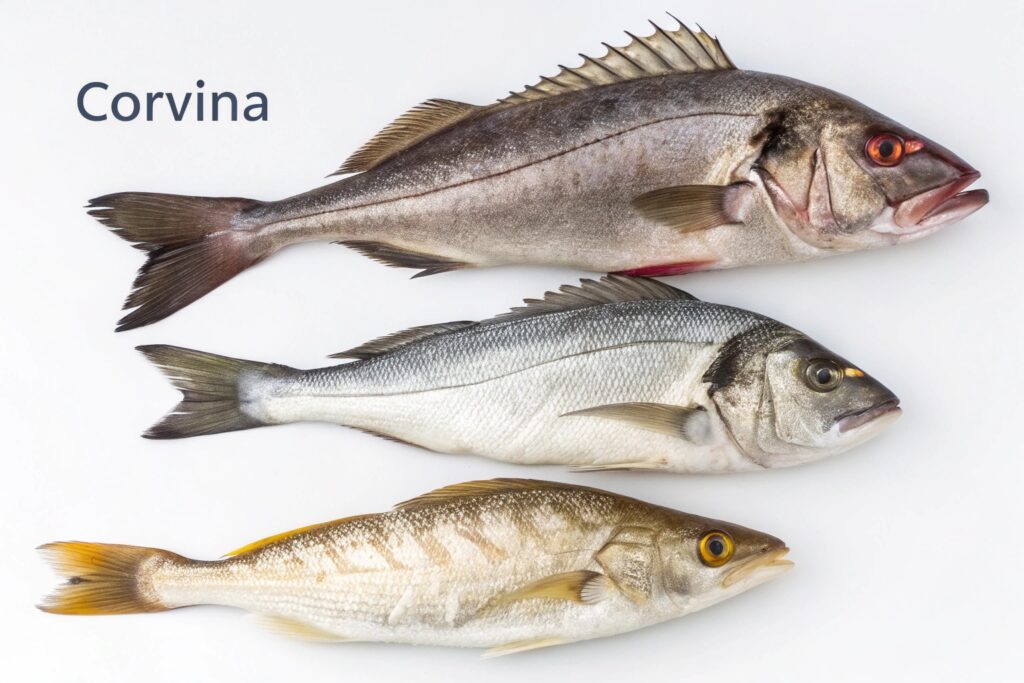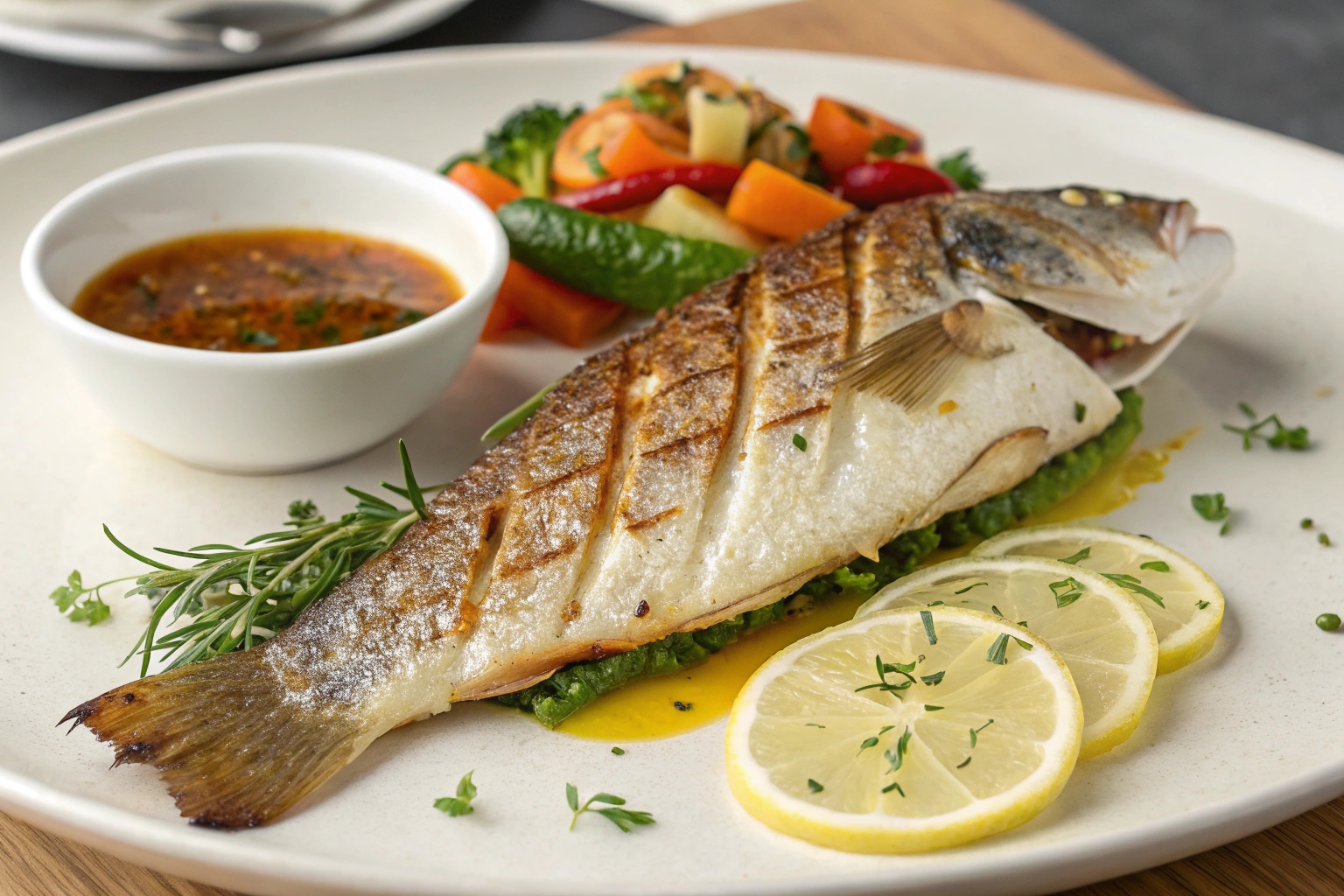corvina fish stands out as a crowd favorite. Known for its firm texture, mildly sweet flavor, and ability to adapt to various culinary styles, corvina has earned its place on tables worldwide. Whether you’re a seasoned chef or a home cook, this fish offers endless possibilities for creating delicious meals that impress. In this guide, we’ll dive deep into the world of corvina fish, exploring its taste profile, varieties, sourcing, cooking methods, and much more. From nutritional benefits to pairing suggestions, you’ll discover everything you need to know about this exceptional fish.
What is Corvina Fish?
Corvina fish is a popular and versatile white fish prized for its delicate flavor and firm texture. Often found in the warm waters of Central and South America, corvina belongs to the croaker family, known scientifically as Sciaenidae. This saltwater fish has become a staple in various cuisines worldwide, appreciated for its adaptability to different cooking methods and its mildly sweet taste.
Corvina fish is often marketed as a premium table fish due to its exceptional qualities. Its fillets are large, pinkish before cooking, and transform into a tender, white, flaky flesh when prepared. The fish is also celebrated for being easy to handle in the kitchen, making it ideal for professional chefs and home cooks alikeTaste Profile of Corvina
The taste profile of corvina is one of its standout features. With a mildly sweet and refreshing flavor, it appeals to those who enjoy seafood without an overpowering “fishy” taste. Its texture is firm yet flaky, making it a versatile choice for numerous recipes.
Flavor and Texture Characteristics
Corvina’s texture is often compared to other premium white fish, such as sea bass or red snapper. The flesh is firm enough to hold its shape during cooking yet softens to a flaky consistency when done. This unique combination of firmness and flakiness makes it suitable for grilling, baking, frying, and steaming.
The slightly sweet taste of corvina pairs well with various seasonings and ingredients, including bold flavors like garlic, black pepper, and citrus. Many chefs recommend using kosher salt and flaky sea salt to enhance its natural taste without overpowering it.
To illustrate the versatility of corvina’s flavor profile, here is a quick comparison of how it pairs with different ingredients:
| Ingredient Type | Examples | Flavor Enhancement |
|---|---|---|
| Citrus | Lemon, lime, orange | Adds brightness and acidity |
| Herbs | Parsley, cilantro, dill | Enhances freshness |
| Spices | Paprika, cumin, chili flakes | Introduces warmth and depth |
Comparison with Red Snapper
Corvina is often compared to red snapper, another popular white fish. While both share a firm texture and mild flavor, there are some key differences:
- Flavor: Corvina’s flavor is slightly sweeter, while red snapper has a more pronounced, nutty undertone.
- Texture: Corvina has a flakier texture compared to the denser flesh of red snapper.
- Appearance: Corvina fillets are pinkish when raw, turning white after cooking, whereas red snapper fillets often have a reddish hue.
For a side-by-side breakdown:
| Characteristic | Corvina | Red Snapper |
|---|---|---|
| Flavor Profile | Mild, sweet | Mild, nutty |
| Texture | Firm and flaky | Firm and dense |
| Best Cooking Methods | Grilling, baking, frying | Grilling, baking, frying |
Both fishes are versatile, but corvina’s delicate sweetness and flaky nature give it a slight edge for those seeking a lighter seafood experience.
Varieties of Corvina

Corvina fish includes several species, collectively known as croakers or drums. These fish are found in various regions, from the Pacific coasts of Central and South America to certain parts of the Atlantic.
Different Species Available
The most common species of corvina include:
- White Corvina (Cilus gilberti): Found primarily along the Pacific coast, this species is widely regarded for its large, meaty fillets.
- Spotted Corvina: Known for its distinctive spotted appearance, this variety is smaller but equally flavorful.
- Golden Corvina: Found in tropical waters, it is prized for its golden sheen and rich taste.
Here’s a quick table summarizing corvina varieties:
| Species | Habitat | Key Features |
|---|---|---|
| White Corvina | Pacific Ocean | Large fillets, mild flavor |
| Spotted Corvina | Coastal waters | Spotted skin, tender flesh |
| Golden Corvina | Tropical regions | Rich flavor, golden hue |
Each variety offers slight differences in flavor and texture, but all share the hallmark qualities that make corvina a sought-after choice.
Habitat and Sourcing
Corvina thrives in warm, coastal waters and is typically sourced from the Pacific and Atlantic oceans. Countries like Peru, Ecuador, and Brazil are major exporters, while local fishermen in these regions catch corvina using sustainable practices to ensure its availability.
When sourcing corvina, here are some tips:
- Look for freshness: The fish should have clear, bright eyes and a clean, oceanic smell.
- Consider sustainability: Opt for suppliers that follow environmentally friendly fishing practices.
- Frozen vs. fresh: While fresh corvina is ideal, frozen options are also available and often retain excellent quality if stored properly.
Cooking Methods for Corvina

Corvina’s versatility makes it suitable for various cooking techniques. Below are some popular methods to prepare this delicious fish:
Baking Corvina
Baking is a simple and healthy way to bring out corvina’s natural flavors. Preheat your oven to 375°F (190°C), season the fillets with kosher salt, black pepper, and your choice of herbs, and bake for 20-25 minutes. Adding a splash of olive oil or butter enhances the flavor and prevents the fish from drying out.
Frying Corvina
For a crispy and indulgent option, frying is an excellent choice. Coat the fillets in a fish fry batter or a coconut crust for extra texture. Fry in hot oil (350°F or 175°C) for 5-7 minutes until golden brown. Serve with homemade sauces for an irresistible fish dish.
Grilling Corvina
Grilling is ideal for highlighting corvina’s firm texture. Brush the fillets with olive oil, season with a pinch of salt and black pepper, and grill for 4-5 minutes per side. Wrapping the fish in foil with lemon slices and herbs can add moisture and flavor.
Here’s a quick grilling guide:
| Step | Instructions |
|---|---|
| Preheat Grill | Medium-high heat |
| Prepare Fillets | Brush with oil, season lightly |
| Cook Time | 4-5 minutes per side |
| Optional Additions | Lemon slices, fresh herbs |
Pairing Suggestions
Pairing corvina with complementary sides and flavors enhances the dining experience. Its mild and sweet taste works well with a range of ingredients.
Best Sides for Corvina
- Vegetables: Roasted asparagus, zucchini, or a medley of grilled vegetables.
- Starches: Rice pilaf, quinoa, or garlic mashed potatoes.
- Sauces: Citrus butter sauce, chimichurri, or a light tomato-based sauce.
Wine Pairings
For beverages, white wines like Sauvignon Blanc or Chardonnay complement corvina’s delicate flavor. For non-alcoholic options, consider citrus-infused sparkling water.
Storage Tips for Corvina fish
Proper storage is essential to maintain corvina’s freshness and flavor.
Freshness Guidelines
When purchasing fresh corvina, look for clear eyes, firm flesh, and a mild ocean smell. Store the fish in the refrigerator and consume within 1-2 days for optimal freshness.
Best Practices for Freezing
To freeze corvina, wrap it tightly in plastic wrap or aluminum foil and place it in an airtight container. Frozen corvina can last up to three months without losing quality. Thaw it in the refrigerator overnight before cooking.
Nutritional Benefits of Corvina

Corvina fish is not only delicious but also packed with nutrients. It is a lean source of protein, making it an excellent choice for those looking to maintain a healthy diet.
Health Benefits of corvina fish
- Rich in Omega-3 Fatty Acids: Promotes heart health and reduces inflammation.
- High in Protein: Supports muscle growth and repair.
- Low in Calories: Ideal for weight management.
Corvina is also a good source of essential vitamins and minerals, including vitamin B12, selenium, and potassium. Its nutritional profile makes it a wholesome addition to any meal.
Corvina fish is a versatile and flavorful choice that suits various cooking methods and culinary styles. Its mild, sweet taste, firm texture, and impressive nutritional benefits make it a favorite among seafood enthusiasts. Whether you’re baking it for a weeknight meal or grilling it for a special occasion, corvina is sure to impress your taste buds.

